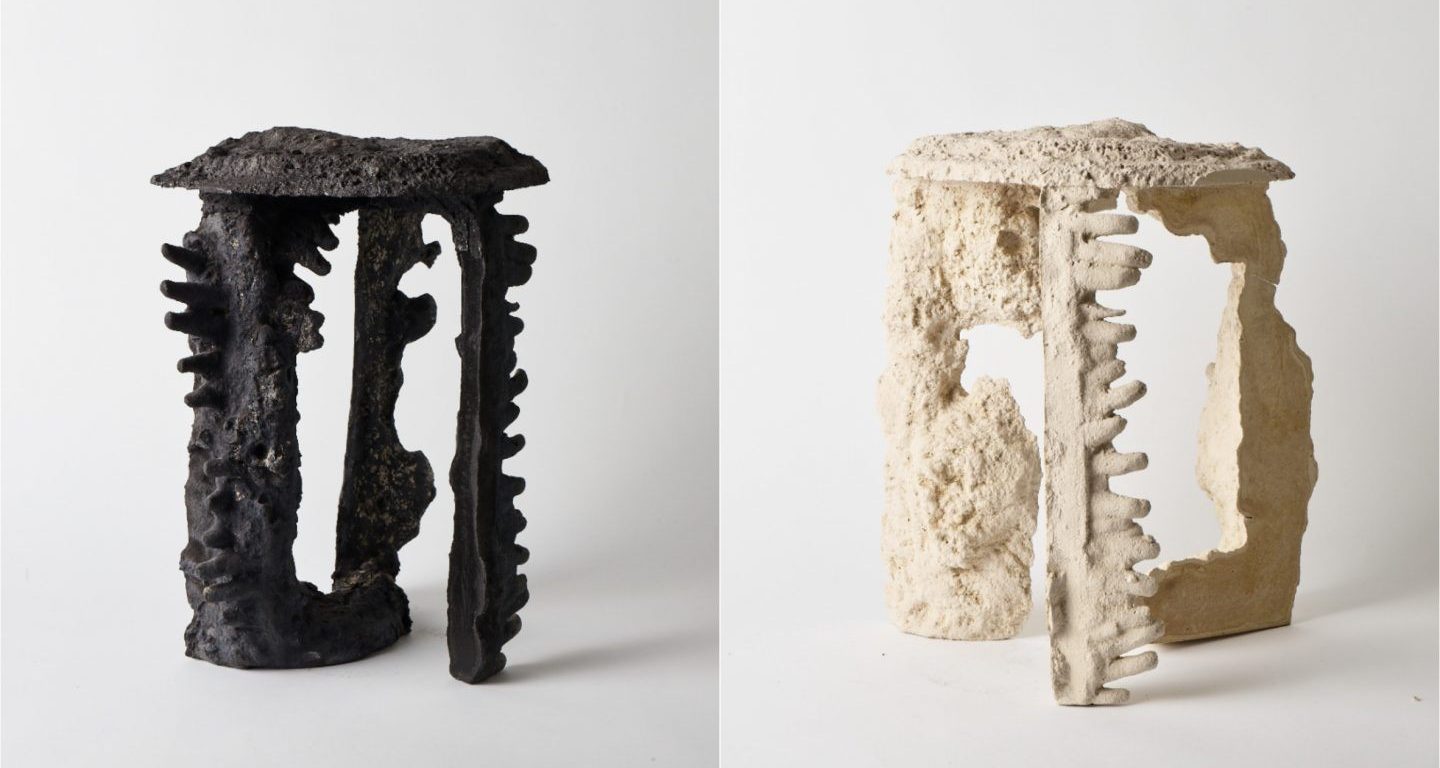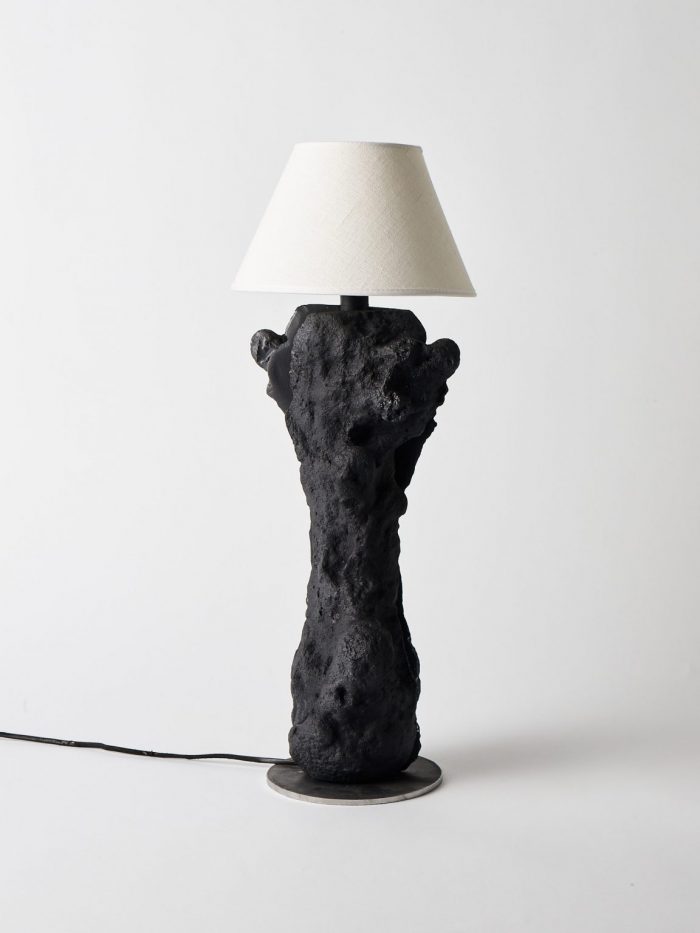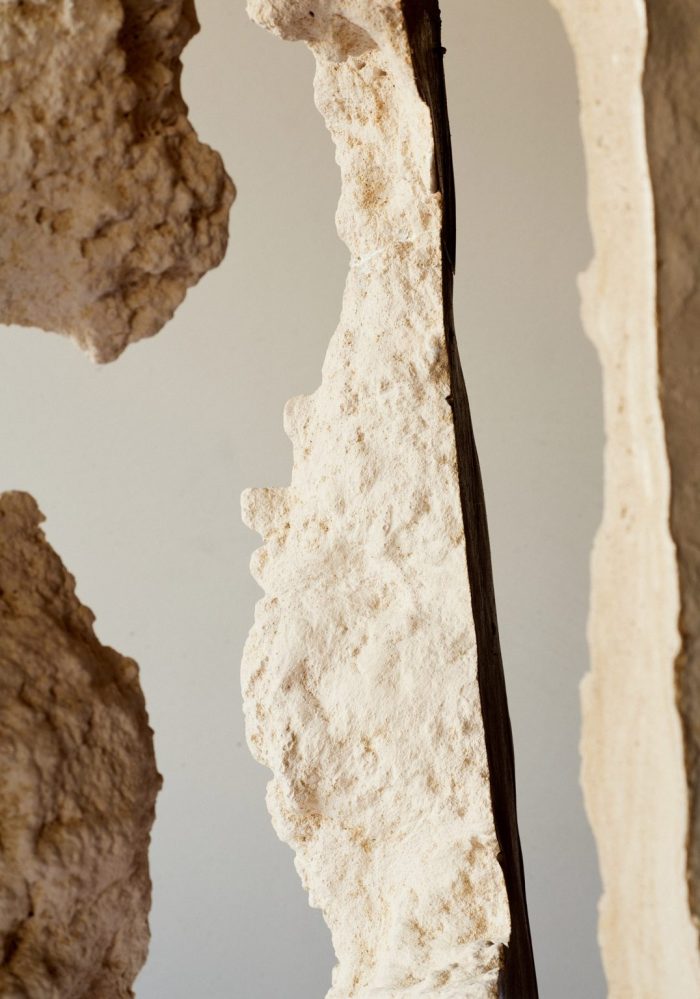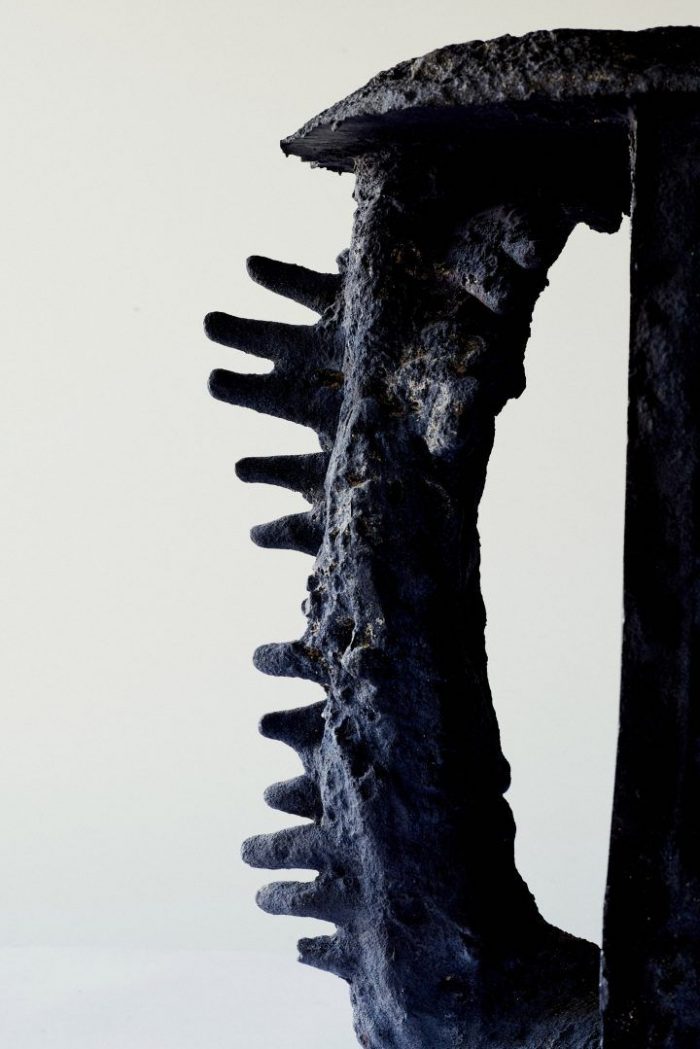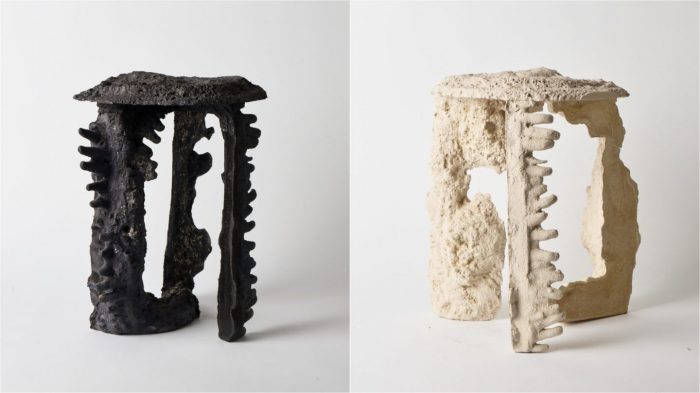瑞典设计师Kajsa Melchior的“ 虚拟腐蚀”是雕刻家具和照明产品的集合,这些家具和照明产品采用了受地质启发的形式,并使用沙子,压力,空气和水独特地制成。
该系列作品曾在2020年斯德哥尔摩家具与灯光博览会上展出。它的概念植根于设想理想化的未来,即为了保护地球资源而禁止机械制造。“地质是灵感的重要来源,” Melchior解释说。她说:“虚构侵蚀”包含了所有收藏,这些收藏都源于未来由于环境问题而禁止使用人机的场景。” “这些收集是对如何使自然形成过程适应设计方法的持续调查得出的推测性结果。” 每个桌子,灯和凳子的有机轮廓都是通过称为砂型铸造的工艺单独制作的。“雕塑是用沙子制成的,这些沙子受到风和水等作用力的作用,但也受到人体产生的压力的作用,她继续说。每个家具都用雪花石膏在沙子中显影;柔软或对雕刻有用的矿物或岩石。Melchior使用气枪和水枪,用自己的双手将沙子操纵成所需的形状。这种实验方法在每件作品上都创造了独特的形状,使雪花石膏上的结构得以创造出自己的类似石头的材料。该系列在美学上令人愉悦,提醒人们不要以“完美”的外观结果为目标-通过借鉴自然过程的线索,我们可以考虑采用新的生产方式。将结构保留在雪花石膏上以创建自己的石头状材料。该系列在美学上令人愉悦,提醒人们不要以“完美”的外观结果为目标-通过借鉴自然过程的线索,我们可以考虑采用新的生产方式。将结构保留在雪花石膏上以创建自己的石头状材料。该系列在美学上令人愉悦,提醒人们不要以“完美”的外观结果为目标-通过借鉴自然过程的线索,我们可以考虑采用新的生产方式。
Swedish designer Kajsa Melchior’s ‘Fictive Erosion’ is a collection of sculpted furniture and lighting pieces that take geologically inspired forms, uniquely created using sand, pressure, air, and water.
The series was exhibited at the 2020 Stockholm Furniture & Light Fair. Its concept is rooted in envisaging an idealistic future where machine manufacturing is prohibited for the sake of preserving the earth’s resources. “Geology is a great source of inspiration,” explains Melchior. “‘Fictive Erosion’ consists of collections which all derive from a future scenario where human machines are banned due to environmental issues,” she says. “The collections are speculative results of an ongoing investigation of how to adapt formation processes in nature into design methods.” The organic silhouettes of each table, lamp, and stool were individually crafted through a process referred to as sand casting. “The sculptures are made from sand that has been exposed to forces such as wind and water, but also from pressure created by the human body,” she continues. Each furniture piece is developed with Alabaster in sand; a mineral or rock that is soft and useful for carving. Melchior uses air and water guns, and her own hands to manipulate the sand into her desired forms. This experimental method creates a unique shape on each piece, leaving the structure on the Alabaster to create its own, stone-like material. The collection is an aesthetically-pleasing reminder that ‘perfect’ looking results should not be the objective—and that by taking cues from natural processes, we can consider new ways to produce.
Design:Kajsa Melchior
Photograph:Kajsa Melchior

